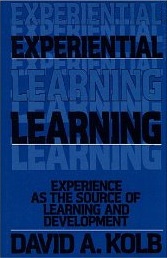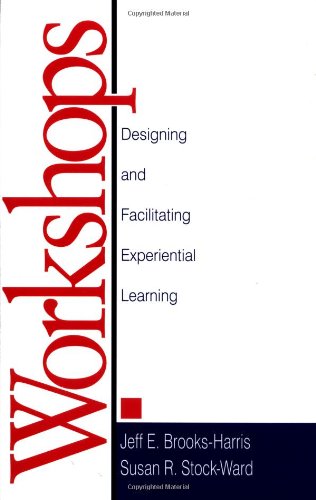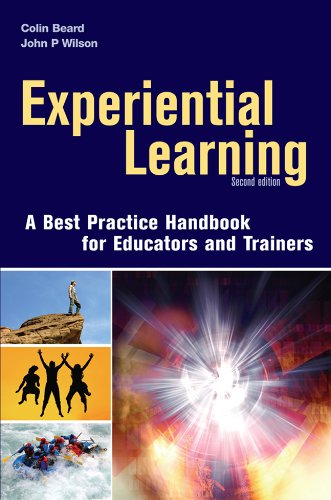

Experiential learning can be defined in two contrasting ways.
It can be seen as 'education that occurs as a direct participation in the events of life' (Houle 1980: 221). This type of learning is achieved through reflection upon everyday experience and is the way that most of us do our learning.
Alternatively, experiential learning can be defined as the sort of learning undertaken by students who are given a chance to acquire and apply knowledge, skills and feelings in an immediate and relevant setting. This involves a 'direct encounter with the phenomena being studied rather than merely thinking about the encounter, or only considering the possibility of doing something about it.' (Borzak 1981: 9)
This latter kind of learning may need to be set up or facilitated by the tutor, trainer or institution � as it involves �training on the job� � or may involve the construction of appropriate simulations.
Much of the discussion around experiential learning stems from the work of David A. Kolb (1976; 1981; 1984) and his associate Roger Fry (Kolb and Fry 1975) Kolb was interested in exploring the processes associated with making sense of concrete experiences - and the different styles of learning that may be involved.
Together with Roger Fry, Kolb created his famous model out of four elements: concrete experience, observation and reflection, the formation of abstract concepts and testing in new situations. He represented these in the famous experiential learning circle:

Kolb and Fry (1975) argue that the learning cycle can begin at any one of the four points - and that it should really be approached as a continuous spiral. They further suggest that effective learning entails the possession of four different abilities (as indicated on each pole of their model):
concrete experience abilities,
reflective observation abilities,
abstract conceptualization abilities
active experimentation abilities.
Few of us can approach the 'ideal' in this respect and tend, they suggest, to develop a strength in, or orientation to, one of the poles of each dimension. As a result Kolb (1976) developed a learning style inventory which was designed to place people on a line between concrete experience and abstract conceptualization; and active experimentation and reflective observation. Using this Kolb and Fry proceeded to identify four basic learning styles.
Learning Style
Learning Characteristic
Description
Converger
Abstract conceptualisation & active experimentation
Strong in practical application of ideas
Can focus on hypo-deductive reasoning on specific problems
Unemotional
Has narrow interests
Diverger
Concrete experience & reflective observation
Strong in imaginative ability
Good at generating ideas and seeing things from different Perspectives
Interested in people
Broad cultural interests
Assimilator
Abstract conceptualisation & reflective observation
Strong ability to create theoretical models
Excels in inductive reasoning
Concerned with abstract concepts rather than people
Accommodator
Concrete experience & active experimentation
Greatest strength is doing things
More of a risk taker
Performs well when required to react to immediate circumstances
Solves problems intuitively
In developing this model Kolb and Fry have helped to challenge those models of learning that seek to reduce potential to one dimension such as intelligence (Tennant 1997: 91). They also recognize that there are strengths and weaknesses associated with each style (and that being 'locked into' one style can put a learner at a serious disadvantage).
Smith (2001) raises a number of key issues arising from the Kolb model:
-
It pays insufficient attention to the process of reflection.
-
The claims made for the four different learning styles are extravagant
-
The model takes very little account of different cultural experiences/conditions
-
The idea of stages or steps does not sit well with the reality of thinking.
-
Empirical support for the model is weak
-
The relationship of learning processes to knowledge is problematic.
Smith suggests that we need to treat Kolb�s ideas with caution but acknowledges, with Tennant (1997: 92) that 'the model provides an excellent framework for planning teaching and learning activities and it can be usefully employed as a guide for understanding learning difficulties, vocational counselling, academic advising and so on'.
References:
Borzak, L. (ed.) (1981) Field Study. A source book for experiential learning, Beverley Hills: Sage Publications.
Houle, C. (1980) Continuing Learning in the Professions, San Francisco: Jossey-Bass.
Kolb, D. A. (1976) The Learning Style Inventory: Technical Manual, Boston, Ma.: McBer.
Kolb, D. A. (1981) 'Learning styles and disciplinary differences'. in A. W. Chickering (ed.) The Modern American College, San Francisco: Jossey-Bass.
Kolb, D. A. (1984) Experiential Learning, Englewood Cliffs, NJ.: Prentice Hall.
Kolb. D. A. and Fry, R. (1975) 'Toward an applied theory of experiential learning;, in C.
Cooper (ed.) Theories of Group Process, London: John Wiley.
Smith, M. K. (2001) 'David A. Kolb on experiential learning', The encyclopedia of informal education, http://www.infed.org/b-explrn.htm.
Tennant, M. (1997) Psychology and Adult Learning 2e, London: Routledge.
Experiential Learning
David A Kolb
Workshops: Designing and Facilitating Experiential Learning
Jeff E Brooks & Susan R Stock
Experiential Learning: A Best Practice Handbook for Educators and Trainers
Colin Beard & John P Wilson


